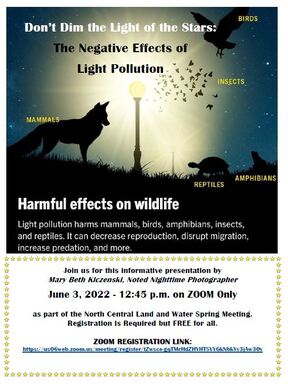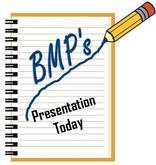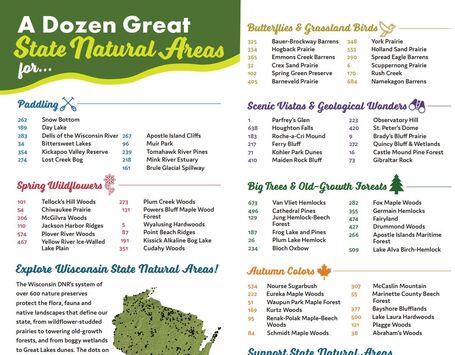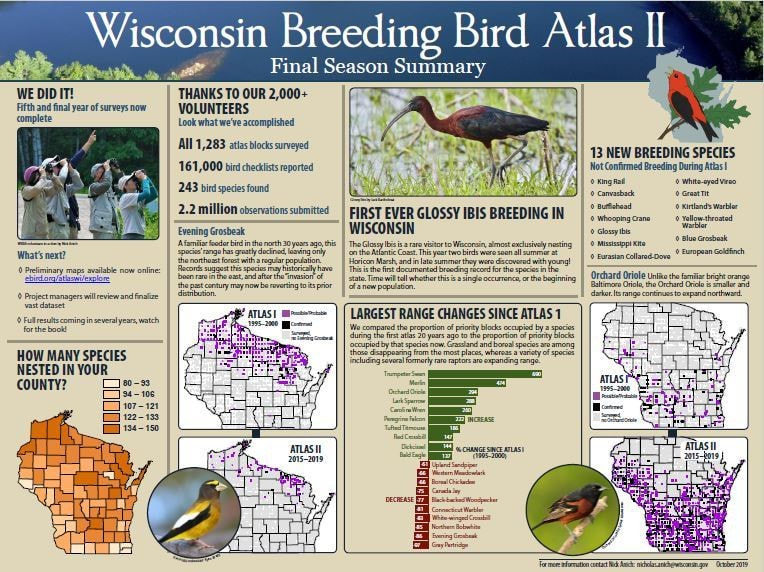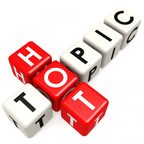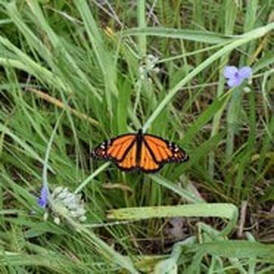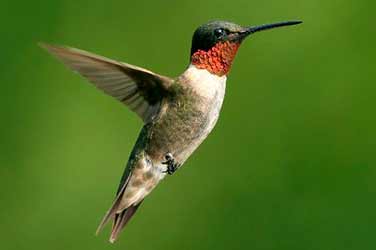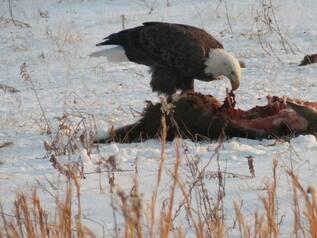Updated July 25, 2024
7:40 a.m.
7:40 a.m.
_____________________________________________
_____________________________________________
What's Buzzing?
|
_____________________________________________
Oneida County e-mails
|
July Update
|
____________________________________________
Are You Interested in
Helping to Reduce Light Pollution?
|
Did you know that 80% of Americans cannot see the Milky Way; 35% of outdoor light is wasted, costing about 3 billion dollars to literally be lost to space; and fireflies, hummingbirds, monarch butterflies, and owls are some of the animals most affected by light pollution?
Artificial light can interrupt natural body rhythms in both humans and animals. An increased amount of light at night can lower melatonin production resulting in sleep deprivation, fatigue, headaches, stress, anxiety and other problems. Studies also show that light pollution can influence animal behaviors like migration patterns, wake-sleep habits, and habitat formation. Because of light pollution, sea turtles and birds guided by moonlight can become confused, lose their way and die. |
Insect populations, a primary source of food for birds and other animals are drawn to artificial lights and instantly killed upon contact.
Safety-related dangers that come with poor visibility at night are caused by glaring lights or bad lighting design, which allows artificial light to shine outward and upward into the sky, where it is wasted instead of focusing light downward, where it does the most good. There are simple measures we can take to make our use of nighttime lighting most effective.
To watch this presentation go to the INSECT DECLINE page.
Safety-related dangers that come with poor visibility at night are caused by glaring lights or bad lighting design, which allows artificial light to shine outward and upward into the sky, where it is wasted instead of focusing light downward, where it does the most good. There are simple measures we can take to make our use of nighttime lighting most effective.
- Install useful light only
- Aim the light down
- Remember that brighter isn’t always better
- Choose LEDs wisely – color does matter
- Use motion sensing lights or timers to help reduce illumination levels and save energy
- Turn off unnecessary indoor lighting at night, particularly empty office buildings
- Outdoor light fixtures that shield the light source can minimize glare and help prevent light pollution
To watch this presentation go to the INSECT DECLINE page.
EPA Recognizes Air Quality
In Rhinelander;
Entire State Now Meets Latest Sulfur
Dioxide Air Quality Standard
Contact: DNR Office of Communications
[email protected]
MADISON, Wis. –
The Wisconsin Department of Natural Resources (DNR) and the U.S. Environmental Protection Agency (EPA) today announced the Rhinelander area will be formally redesignated to attainment of the most recent federal air quality standard for sulfur dioxide.
Analyses of air monitoring and modeling data show that air concentrations of sulfur dioxide in the area meet the National Ambient Air Quality Standard set to protect human health and the environment. The Rhinelander area also meets all other standards for all air pollutants regulated under the National Ambient Air Quality Standard.
“People in the Rhinelander area are breathing cleaner, healthier air due to EPA’s partnership with the state of Wisconsin,” said EPA Region 5 Administrator Debra Shore. “Reducing sulfur dioxide pollution in the air is especially helpful for vulnerable populations.”
This designation officially recognizes that the air quality in the Rhinelander area is meeting this health-based air quality standard. As a result, the entire state of Wisconsin now meets the latest sulfur dioxide air quality standard.
“Meeting the 2010 sulfur dioxide National Ambient Air Quality Standard has been a complex process involving many areas of the DNR’s Air Management Program, EPA and facilities in Wisconsin,” said Gail Good, the Wisconsin Department of Natural Resources’ Acting Environmental Management Division Administrator.
Sulfur dioxide (SO2) is an air pollutant regulated under both the federal Clean Air Act and Wisconsin state law. The largest source of sulfur dioxide in the atmosphere is the burning of fossil fuels by power plants and other industrial facilities. Exposure to sulfur dioxide can harm the human respiratory system and make breathing difficult. Sulfur dioxide emissions can also damage foliage and crops, form acid rain and increase haze.
Based on monitored air quality data, a portion of Oneida County near Rhinelander was designated as nonattainment of the sulfur dioxide National Ambient Air Quality Standard in 2013. Following this designation, the DNR’s Air Management program worked closely with the Ahlstrom-Munksjö Rhinelander paper mill, the facility primarily responsible for sulfur dioxide emissions in the area, to identify and implement new emissions control measures. As a result of these actions, the monitored sulfur dioxide concentrations decreased by over 75%, and the area’s air quality began meeting the National Ambient Air Quality Standard in 2018.
“This widespread improvement in sulfur dioxide levels across the state is an air quality success story,” Good said. “Emissions of sulfur dioxide from Wisconsin sources are approximately 90% lower than 2002 levels, with most of this decline attributable to the use of cleaner-burning fuels at power plants and industrial facilities, along with the introduction of low-sulfur diesel fuels.”
[email protected]
MADISON, Wis. –
The Wisconsin Department of Natural Resources (DNR) and the U.S. Environmental Protection Agency (EPA) today announced the Rhinelander area will be formally redesignated to attainment of the most recent federal air quality standard for sulfur dioxide.
Analyses of air monitoring and modeling data show that air concentrations of sulfur dioxide in the area meet the National Ambient Air Quality Standard set to protect human health and the environment. The Rhinelander area also meets all other standards for all air pollutants regulated under the National Ambient Air Quality Standard.
“People in the Rhinelander area are breathing cleaner, healthier air due to EPA’s partnership with the state of Wisconsin,” said EPA Region 5 Administrator Debra Shore. “Reducing sulfur dioxide pollution in the air is especially helpful for vulnerable populations.”
This designation officially recognizes that the air quality in the Rhinelander area is meeting this health-based air quality standard. As a result, the entire state of Wisconsin now meets the latest sulfur dioxide air quality standard.
“Meeting the 2010 sulfur dioxide National Ambient Air Quality Standard has been a complex process involving many areas of the DNR’s Air Management Program, EPA and facilities in Wisconsin,” said Gail Good, the Wisconsin Department of Natural Resources’ Acting Environmental Management Division Administrator.
Sulfur dioxide (SO2) is an air pollutant regulated under both the federal Clean Air Act and Wisconsin state law. The largest source of sulfur dioxide in the atmosphere is the burning of fossil fuels by power plants and other industrial facilities. Exposure to sulfur dioxide can harm the human respiratory system and make breathing difficult. Sulfur dioxide emissions can also damage foliage and crops, form acid rain and increase haze.
Based on monitored air quality data, a portion of Oneida County near Rhinelander was designated as nonattainment of the sulfur dioxide National Ambient Air Quality Standard in 2013. Following this designation, the DNR’s Air Management program worked closely with the Ahlstrom-Munksjö Rhinelander paper mill, the facility primarily responsible for sulfur dioxide emissions in the area, to identify and implement new emissions control measures. As a result of these actions, the monitored sulfur dioxide concentrations decreased by over 75%, and the area’s air quality began meeting the National Ambient Air Quality Standard in 2018.
“This widespread improvement in sulfur dioxide levels across the state is an air quality success story,” Good said. “Emissions of sulfur dioxide from Wisconsin sources are approximately 90% lower than 2002 levels, with most of this decline attributable to the use of cleaner-burning fuels at power plants and industrial facilities, along with the introduction of low-sulfur diesel fuels.”
Deer Donation Program-2023
Hunters Encouraged To Participate in DNR's Deer Donation Program,
"Deer Donations Help Wisconsinites in Need"
The Wisconsin Department of Natural Resources (DNR) encourages hunters to donate Wisconsin-harvested deer through the DNR’s Deer Donation Program. The program helps stock food pantries for the upcoming holiday season and supports residents in need throughout the state.
Since the program began in 2000, hunters have donated 98,000 deer, totaling over 3.9 million pounds of venison, to help Wisconsinites in need.
Wisconsin has a network of venison donation partners, including county land and water conservation departments, food pantries, charitable organizations, USDA - Wildlife Services, and participating meat processors, who all help implement and administer the program.
“This is a great opportunity for hunters to showcase their sportsmanship and help individuals in their local communities facing food insecurity,” said DNR program administrator Grace Nugent. According to data from the Wisconsin Department of Health Services, more than 900,000 Wisconsin residents received food assistance in 2022. “There is a big demand for venison provided through the Deer Donation Program, and we are hopeful hunters will continue to donate their deer and help those in need.”
Hunters interested in donating a Wisconsin-harvested deer to the DNR’s Deer Donation Program should follow these steps:
Visit Wisconsin’s Deer Donation Program webpage to learn more about the program.
"Deer Donations Help Wisconsinites in Need"
The Wisconsin Department of Natural Resources (DNR) encourages hunters to donate Wisconsin-harvested deer through the DNR’s Deer Donation Program. The program helps stock food pantries for the upcoming holiday season and supports residents in need throughout the state.
Since the program began in 2000, hunters have donated 98,000 deer, totaling over 3.9 million pounds of venison, to help Wisconsinites in need.
Wisconsin has a network of venison donation partners, including county land and water conservation departments, food pantries, charitable organizations, USDA - Wildlife Services, and participating meat processors, who all help implement and administer the program.
“This is a great opportunity for hunters to showcase their sportsmanship and help individuals in their local communities facing food insecurity,” said DNR program administrator Grace Nugent. According to data from the Wisconsin Department of Health Services, more than 900,000 Wisconsin residents received food assistance in 2022. “There is a big demand for venison provided through the Deer Donation Program, and we are hopeful hunters will continue to donate their deer and help those in need.”
Hunters interested in donating a Wisconsin-harvested deer to the DNR’s Deer Donation Program should follow these steps:
- Field dress the deer.
- Register the deer through GameReg. Please note the registration confirmation number and keep it on hand when dropping off the deer.
- Test the deer for CWD before taking the deer to a processor if harvested from a CWD-affected county. A list of CWD sampling locations is available on the DNR’s Sampling For Chronic Wasting Disease webpage.
- Call ahead. Contact a participating processor before dropping off the deer to make sure they have space to accept it. More processors may be added later in the season, so check back if you don’t see one currently in your area.
- Bring the deer to the processor. If donating a deer being tested for CWD, inform the processor and provide the CWD barcode number. The processor will not distribute the deer until the results are known.
Visit Wisconsin’s Deer Donation Program webpage to learn more about the program.
"The Perfect Pollinator Garden is
Perfect for Birds Too!"
Workshop aired Saturday, June 26, 2021 - 6:00 p.m.
Make Your Habitat Count: Add To
Wisconsin's Tally
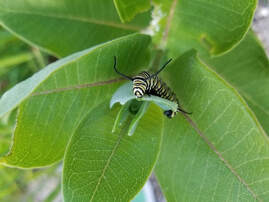 Monarch caterpillars eat only milkweed. Swamp milkweed, butterfly milkweed and common milkweed are Wisconsin milkweed species known to be used by monarchs and easy to establish. Photo Credit: Becky Roth
Monarch caterpillars eat only milkweed. Swamp milkweed, butterfly milkweed and common milkweed are Wisconsin milkweed species known to be used by monarchs and easy to establish. Photo Credit: Becky Roth
Once you've planted milkweed and other native plants benefitting pollinators, help make that habitat count.
Enter it into the HabiTally application, now available for smart phones using Android and iOS operating systems. Download it from Google Play* or the Apple* App store.
The Wisconsin Monarch Collaborative, of which DNR is a partner, encourages people to add their habitat to HabiTally, so it counts towards the 20-year goal of 120 million new stems of milkweed in a mix of wildflowers.
That goal is Wisconsin's contribution to restoring Midwestern breeding habitat for the eastern population of monarch butterflies that overwinters in Mexico.
Enter it into the HabiTally application, now available for smart phones using Android and iOS operating systems. Download it from Google Play* or the Apple* App store.
The Wisconsin Monarch Collaborative, of which DNR is a partner, encourages people to add their habitat to HabiTally, so it counts towards the 20-year goal of 120 million new stems of milkweed in a mix of wildflowers.
That goal is Wisconsin's contribution to restoring Midwestern breeding habitat for the eastern population of monarch butterflies that overwinters in Mexico.
*Use of brand names is for educational purposes and does not promote the endorsement of one brand over any other.
Bat Newsletter: Silver Linings,
New Projects and Results Revealing Bats' Voracious, Varied Appetites
In a world seemingly flipped upside down in 2020, the image of two hibernating little brown bats pairing up to make it through a long winter hit home. Every year, but particularly in 2020, volunteers for the Wisconsin Department of Natural Resources' Wisconsin Bat Program have our back.
Their efforts played an important role in helping our three DNR bat biologists continue critical efforts to protect, monitor and manage populations of Wisconsin's native bat species, particularly the four hibernating bat species vulnerable to white-nose syndrome, a deadly disease of bats. Thank you volunteers!
Inside the Echolocator you'll find:
Their efforts played an important role in helping our three DNR bat biologists continue critical efforts to protect, monitor and manage populations of Wisconsin's native bat species, particularly the four hibernating bat species vulnerable to white-nose syndrome, a deadly disease of bats. Thank you volunteers!
Inside the Echolocator you'll find:
- Results from DNR population surveys at hibernation sites, including "ground zero" where white-nose syndrome was first detected in Wisconsin in 2014
- What volunteer monitors found when counting bats emerging from roosts and from "listening" to bats' nighttime calls while driving, walking or paddling along set routes
- Updates on the first vaccine trials in the wild for white-nose syndrome and new DNR projects using remote technologies to keep tabs on bats during the pandemic
- A fascinating look by DNR partner and former UW-Madison PhD Researcher Amy Wray at her study quantifying and analyzing what’s on the menu for Wisconsin bats and why that matters.
______________________________________
|
UMISC PRESENTATION IS AVAILABLE NOW! Click on the title below "BEST MANAGEMENT PRACTICES: POLLINATOR-FRIENDLY INVASIVE SPECIES MANAGEMENT PRESENTATION" |
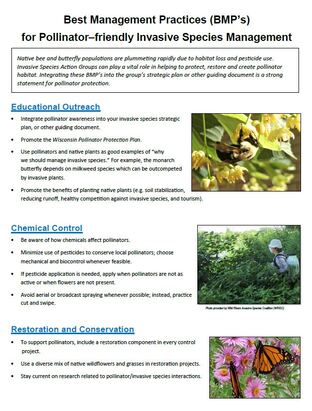
|
_________________________________
Got Buckthorn?
Get rid of it!
Click the button below to find out how.
_____________________________________________
HORICON NATIONAL WILDIFE REFUGE, Wis. – A female whooping crane that made history as the first of its kind known to survive a Wisconsin winter has once again flown into the record books.
Crane #38-17 has successfully paired up and become a mother, producing the first wild whooping crane chick to hatch and fledge from Horicon Marsh. The history-making offspring arrived three years after its mother, hatched and captive-reared in Maryland before being transferred to Wisconsin, became the first known whooping crane to overwinter in Wisconsin instead of migrating south. She survived one of the state’s coldest and longest winters and became a Facebook favorite as anxious fans tuned in to track her survival.
“The survival and successful migration of every chick hatched is important, so #38-17’s survival and maternal status is great news,” said Davin Lopez, a DNR conservation biologist who is part of the whooping crane team. “This wild chick represents several milestones toward the ultimate goal of establishing a self-sustaining migratory flock.”
#38-17 was hatched at Patuxent Wildlife Research Center in Maryland and raised there by parent cranes. She was transported to Wisconsin on Oct. 3, 2017 and released at Horicon National Wildlife Refuge in Dodge County in the hopes she would follow an adult crane and migrate. #38-17 never migrated and she evaded efforts to capture her and fly her south in an airplane. "She has been very vigilant when we've seen her, and she stays hidden pretty well in the marsh, especially when it's cold," said Hillary Thompson of the International Crane Foundation. The crane survived, and in fall 2018, #38-17 headed south for the first time with #63-15 to winter in Illinois. The whooping crane has returned every summer since with #63-15, and the two had a successful nest this year at Horicon National Wildlife Refuge in Dodge County. Their offspring, #W13-20 hatched in mid-May.
Mother, father and their young crane were sighted and photographed by pilot Bev Paulan on Aug. 18, 2020 in Horicon Marsh as part of partner efforts to monitor whooping cranes and their young hatched in the wild. Partners are hopeful the young family flies south soon and adds to the eastern migratory population of whooping cranes. “The reintroduction team and refuge staff hope to learn more from #38-17 about habitat choices and factors that contribute to successful reproduction in whooping cranes in Wisconsin and on the Horicon Marsh National Wildlife Refuge,” said Sadie O’Dell, a wildlife biologist with Horicon National Wildlife Refuge.
Partners including the U.S. Fish & Wildlife Service, International Crane Foundation, Wisconsin DNR and, formerly, Operation Migration have worked for nearly 20 years to establish an eastern migratory flock of whooping cranes that nests primarily in Wisconsin and winters in the southern United States.
Whooping cranes are one of 15 crane species worldwide. This particular species is found only in North America and is the tallest bird in the continent, standing five feet tall. Whooping cranes are endangered; there are only 849 whooping cranes in the world, both wild and captive, although that number is increasing thanks to efforts by the reintroduction team.
Keep Up With The Whoopers and Safe Viewing Tips
Keep up with these and other Wisconsin whoopers on the International Crane Foundation’s (ICF) website and Facebook account. Partners establishing the whooping crane population in eastern North America ask anyone who encounters a whooping crane in the wild to please give them the respect and distance they need.
Crane #38-17 has successfully paired up and become a mother, producing the first wild whooping crane chick to hatch and fledge from Horicon Marsh. The history-making offspring arrived three years after its mother, hatched and captive-reared in Maryland before being transferred to Wisconsin, became the first known whooping crane to overwinter in Wisconsin instead of migrating south. She survived one of the state’s coldest and longest winters and became a Facebook favorite as anxious fans tuned in to track her survival.
“The survival and successful migration of every chick hatched is important, so #38-17’s survival and maternal status is great news,” said Davin Lopez, a DNR conservation biologist who is part of the whooping crane team. “This wild chick represents several milestones toward the ultimate goal of establishing a self-sustaining migratory flock.”
#38-17 was hatched at Patuxent Wildlife Research Center in Maryland and raised there by parent cranes. She was transported to Wisconsin on Oct. 3, 2017 and released at Horicon National Wildlife Refuge in Dodge County in the hopes she would follow an adult crane and migrate. #38-17 never migrated and she evaded efforts to capture her and fly her south in an airplane. "She has been very vigilant when we've seen her, and she stays hidden pretty well in the marsh, especially when it's cold," said Hillary Thompson of the International Crane Foundation. The crane survived, and in fall 2018, #38-17 headed south for the first time with #63-15 to winter in Illinois. The whooping crane has returned every summer since with #63-15, and the two had a successful nest this year at Horicon National Wildlife Refuge in Dodge County. Their offspring, #W13-20 hatched in mid-May.
Mother, father and their young crane were sighted and photographed by pilot Bev Paulan on Aug. 18, 2020 in Horicon Marsh as part of partner efforts to monitor whooping cranes and their young hatched in the wild. Partners are hopeful the young family flies south soon and adds to the eastern migratory population of whooping cranes. “The reintroduction team and refuge staff hope to learn more from #38-17 about habitat choices and factors that contribute to successful reproduction in whooping cranes in Wisconsin and on the Horicon Marsh National Wildlife Refuge,” said Sadie O’Dell, a wildlife biologist with Horicon National Wildlife Refuge.
Partners including the U.S. Fish & Wildlife Service, International Crane Foundation, Wisconsin DNR and, formerly, Operation Migration have worked for nearly 20 years to establish an eastern migratory flock of whooping cranes that nests primarily in Wisconsin and winters in the southern United States.
Whooping cranes are one of 15 crane species worldwide. This particular species is found only in North America and is the tallest bird in the continent, standing five feet tall. Whooping cranes are endangered; there are only 849 whooping cranes in the world, both wild and captive, although that number is increasing thanks to efforts by the reintroduction team.
Keep Up With The Whoopers and Safe Viewing Tips
Keep up with these and other Wisconsin whoopers on the International Crane Foundation’s (ICF) website and Facebook account. Partners establishing the whooping crane population in eastern North America ask anyone who encounters a whooping crane in the wild to please give them the respect and distance they need.
- Do not approach birds on foot within 200 yards. Please remain concealed and do not speak loudly enough that the birds can hear you;
- Remain in your vehicle and do not approach in a vehicle any closer than 100 yards; and
___________________________________
7 Ways to Use Fall Leaves
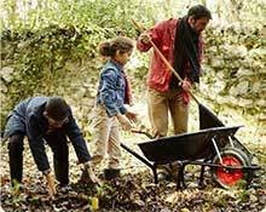
The close of the gardening season is always bittersweet. Though there are few more beautiful places on earth than Wisconsin in the autumn, it’s hard saying goodbye to the lush, green world for one that's cold and white. Now it's time to reap the season's most abundant crop: leaves.
One of the very best sources of organic matter is autumn leaves. Leaves are packed with trace minerals that trees draw up from deep in the soil. When added to your garden, leaves feed earthworms and beneficial microbes. They lighten heavy soils and help sandy soils retain moisture. Leaves make an attractive mulch in the flower garden. They're a fabulous source of carbon to balance the nitrogen in your compost pile. And they insulate tender plants from cold.
Read about how to use fall leaves as:
One of the very best sources of organic matter is autumn leaves. Leaves are packed with trace minerals that trees draw up from deep in the soil. When added to your garden, leaves feed earthworms and beneficial microbes. They lighten heavy soils and help sandy soils retain moisture. Leaves make an attractive mulch in the flower garden. They're a fabulous source of carbon to balance the nitrogen in your compost pile. And they insulate tender plants from cold.
Read about how to use fall leaves as:
|
|
Why Do Leaves Change Color in the Fall?
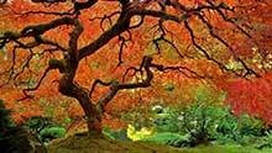
Why do leaves change color in the fall? When leaves appear green, it is because they contain an abundance of chlorophyll. There is so much chlorophyll in an active leaf that the green masks other pigment colors. Light regulates chlorophyll production, so as autumn days grow shorter, less chlorophyll is produced. The decomposition rate of chlorophyll remains constant, so the green color starts to fade from leaves.
At the same time, surging sugar concentrations cause increased production of anthocyanin pigments. Leaves containing primarily anthocyanins will appear red. Carotenoids are another class of pigments found in some leaves. Carotenoid production is not dependent on light, so levels aren't diminished by shortened days. Carotenoids can be orange, yellow, or red, but most of these pigments found in leaves are yellow. Leaves with good amounts of both anthocyanins and carotenoids will appear orange.
Temperature affects the rate of chemical reactions, including those in leaves, so it plays a part in leaf color. However, it's mainly light levels that are responsible for fall foliage colors.
Sunny autumn days are needed for the brightest color displays, since anthocyanins require light. Overcast days will lead to more yellows and browns.
At the same time, surging sugar concentrations cause increased production of anthocyanin pigments. Leaves containing primarily anthocyanins will appear red. Carotenoids are another class of pigments found in some leaves. Carotenoid production is not dependent on light, so levels aren't diminished by shortened days. Carotenoids can be orange, yellow, or red, but most of these pigments found in leaves are yellow. Leaves with good amounts of both anthocyanins and carotenoids will appear orange.
Temperature affects the rate of chemical reactions, including those in leaves, so it plays a part in leaf color. However, it's mainly light levels that are responsible for fall foliage colors.
Sunny autumn days are needed for the brightest color displays, since anthocyanins require light. Overcast days will lead to more yellows and browns.
Neonictonoids: Toxic Effects On Pollinators

In 1962, Rachel Carson published The Silent Spring which was a warning of the dangers of a revolutionary new pesticide DDT. She had noticed that in the 1950's and 1960's it was responsible for, among other things, the crashing of bird populations. DDT was banned in the United States in 1972 but it appears that history is repeating itself and we are fast approaching a time when it might be said, "The summer afternoons are strangely silent when they were once filled with the gentle buzzing of bees." A film documentary called 'Rachel Carson' produced by American Experience may be seen on Amazon Prime.
The culprit this time is another revolutionary group of pesticides called neonicotinoids ('neonics' for short). They were first introduced in the 1990's and are currently the world's most widely used insecticide. Over 140 different crops including soy, corn wheat, cotton, legumes, potatoes, sugar beets, sunflowers, rapeseed and flax are treated with neonics.
A Potent Neurotoxin
Neonics are neurotoxins designed to attack an insect's central nervous system causing paralysis and eventually death. There were designed specifically to target agricultural pests such as vine weevils, aphids, whiteflies, Colorado potato beetles and termites. The damage they have caused over the last two decades to other insects, including bees, has been devastating.
Chronic Effects On Bees
Scientific evidence collected over the last decade or so proves that neonics produce numerous chronic symptoms in bees such as:
☆ Interfering with their navigation systems
☆ Disrupting their foraging behavior
☆ Disrupting their ability to communicate
☆ Impairing their immune systems
☆ Reducing reproductive success
☆ Residues in nests of solitary bees may be linked to fewer egg cells.
Read More
The culprit this time is another revolutionary group of pesticides called neonicotinoids ('neonics' for short). They were first introduced in the 1990's and are currently the world's most widely used insecticide. Over 140 different crops including soy, corn wheat, cotton, legumes, potatoes, sugar beets, sunflowers, rapeseed and flax are treated with neonics.
A Potent Neurotoxin
Neonics are neurotoxins designed to attack an insect's central nervous system causing paralysis and eventually death. There were designed specifically to target agricultural pests such as vine weevils, aphids, whiteflies, Colorado potato beetles and termites. The damage they have caused over the last two decades to other insects, including bees, has been devastating.
Chronic Effects On Bees
Scientific evidence collected over the last decade or so proves that neonics produce numerous chronic symptoms in bees such as:
☆ Interfering with their navigation systems
☆ Disrupting their foraging behavior
☆ Disrupting their ability to communicate
☆ Impairing their immune systems
☆ Reducing reproductive success
☆ Residues in nests of solitary bees may be linked to fewer egg cells.
Read More
_______________________________________________
What's New in the Courthouse Garden?
There's something new in the Courthouse Garden! We have added some garden stakes with small Flower ID cards throughout the garden so you can easily identify the different types of flowers that are currently blooming. Each ID card has a QR code on it so you can quickly go to the on-line Wildflowers Field Guide to learn more about each species. Enjoy your walk through the beautiful Courthouse Garden and take a moment to watch these beautiful bees in slow motion.
Take a Walk Through the Courthouse Garden
A virtual walk is good but an on-site walk is even better. Take a stroll, watch the bees and butterflies, or maybe see a hummingbird. It's a beautiful day in the Courthouse Garden on Baird Avenue in Rhinelander.
Bird Survey Ends With a Photo Finish
Volunteers and organizers wrapped up Wisconsin’s 5-year statewide breeding bird survey with an exciting photo finish: volunteer Aaron Haycraft sighted a glossy ibis pair and their young at Horicon Marsh, the first time this Atlantic Coast bird has been documented nesting in Wisconsin. Twelve other new bird species were documented breeding in Wisconsin that were not documented during a similar survey in 2000.
Meet Tom and Eva Wedel, owners of Oak Woods Foundation in Argyle, Wisconsin. This awe-inspiring oasis of tranquility is home to 400 acres of rolling prairies and forests, providing habitat for fluttering monarchs and other butterflies feeding on milkweed and various wildflowers.
See the interactive, multimedia story map.
Read the full, printable story.
See the interactive, multimedia story map.
Read the full, printable story.
Dust off your hummingbird feeders and brew up some nectar as Ruby-Throated Hummingbirds customarily return to Wisconsin in the first 2 weeks of May. The 'hummers' are going to be very hungry when they arrive as there are few plants for them to forage following our late-arriving snow storms.
6 Ways To Attract Hummers to Your Yard
Hummingbird Nectar Recipe
1. Combine one part plain white, granulated table sugar and four parts water.
2. Slowly heat the solution for 1-2 minutes to help the sugar dissolve and slow fermentation.
3. Allow the solution to cool completely before filling feeders.Learn More
6 Ways To Attract Hummers to Your Yard
- More than most birds, hummers need to bathe regularly, due to the sticky nature of nectar.
- They prefer very shallow, moving water, or a spray mist.
- Placing nesting material near a feeder may attract female hummingbirds to nest near you.
- "Hummer Helper®” is a practical nesting material and is available at many bird stores and garden centers.
- Hummer nests are often re-used, wholly or in part. Leave a nest in place.
Hummingbird Nectar Recipe
1. Combine one part plain white, granulated table sugar and four parts water.
2. Slowly heat the solution for 1-2 minutes to help the sugar dissolve and slow fermentation.
3. Allow the solution to cool completely before filling feeders.Learn More
Montana Landowners are Hooked on Luring Eagles with Deer Carcasses |
INTERESTING?!
|
A Teen Scientist Helped me Discover
Tons of Golf Balls
Polluting the Ocean








